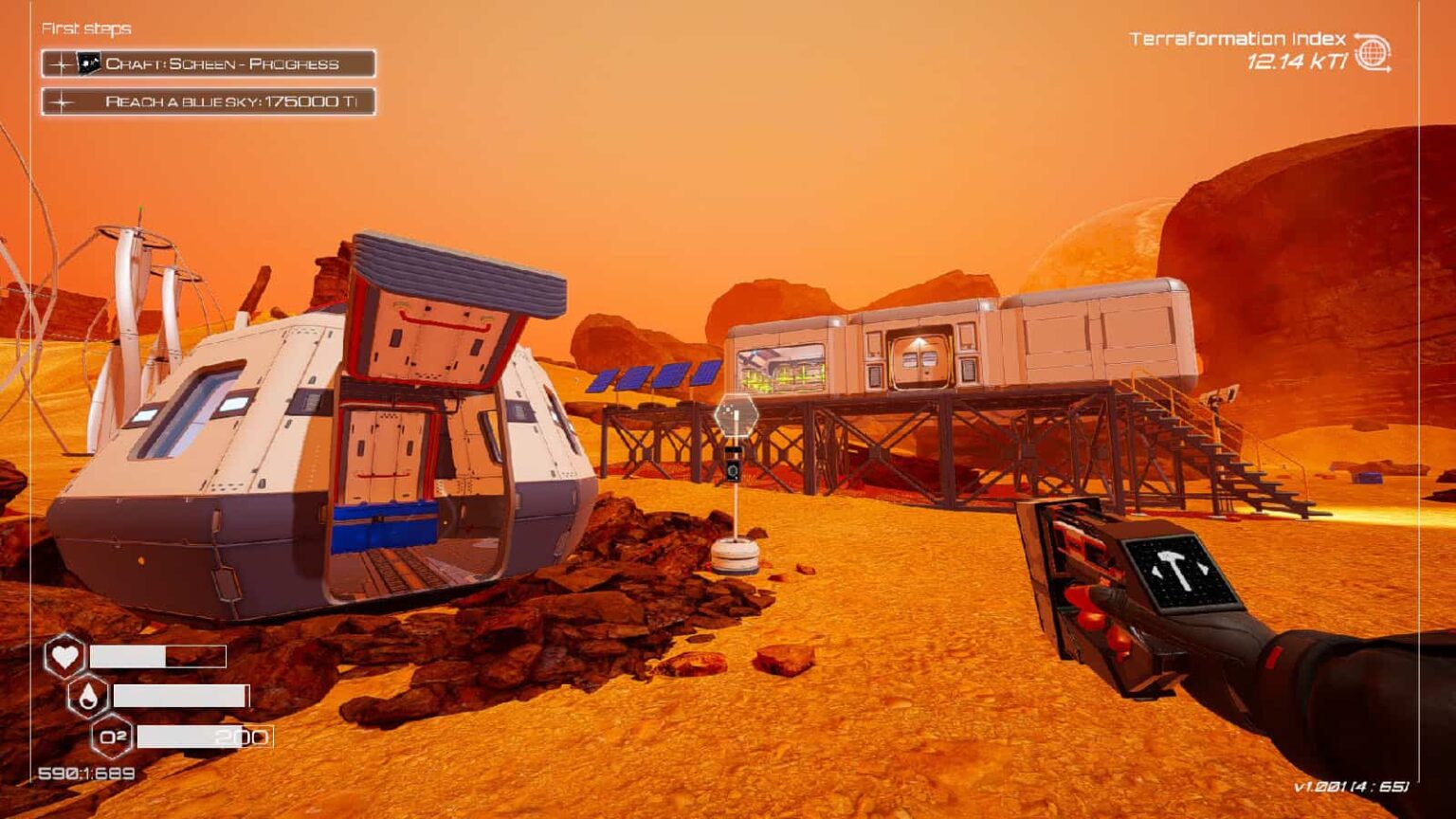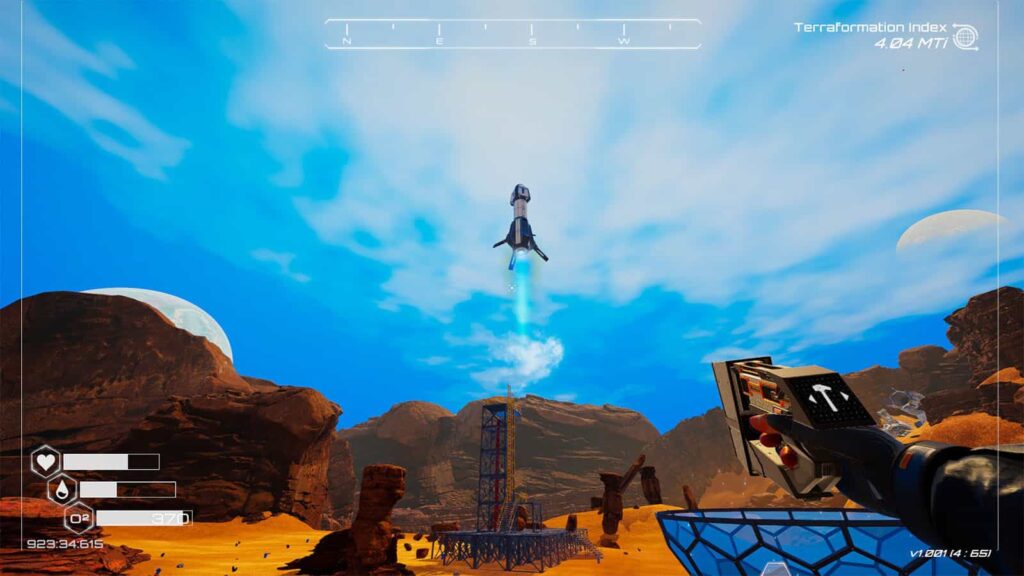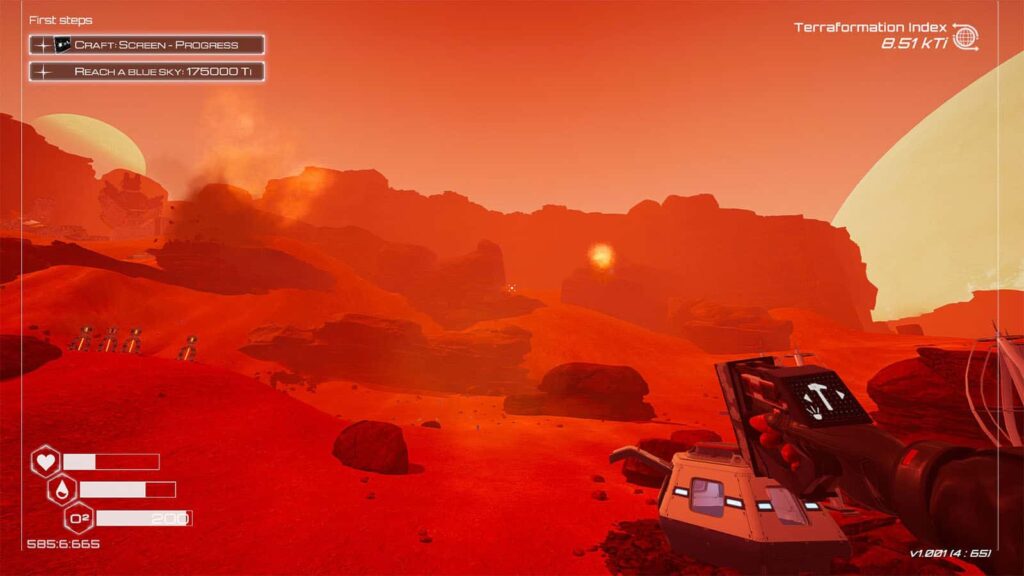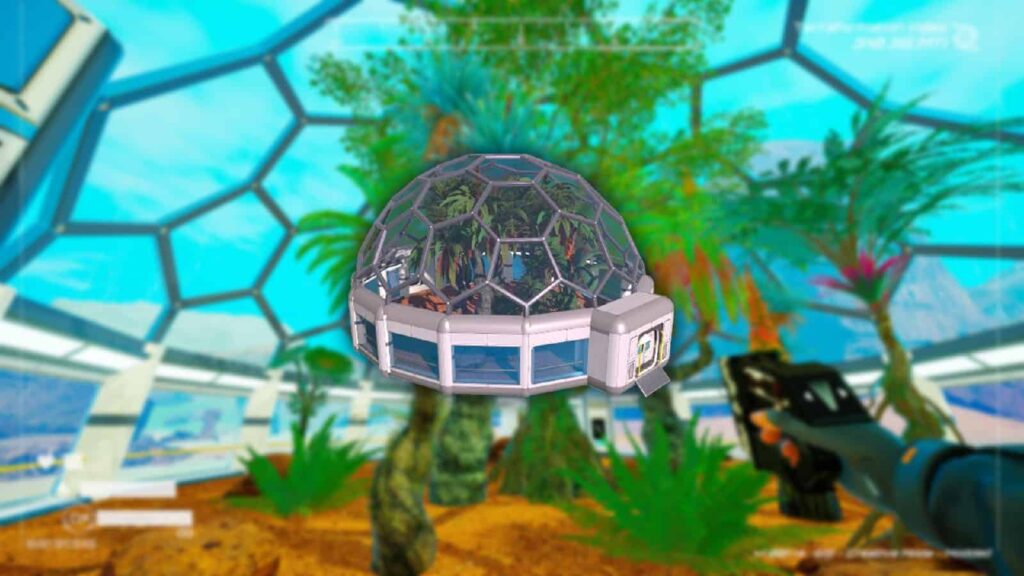The Planet Crafter is a game where players land on a desolate planet and their main objective is to terraform it to become a habitable one. However, the game doesn’t have much to go for when it comes to guidance aside from the first few objectives right after crash landings. Read ahead as we share some tips and tricks on how to have a good start in The Planet Crafter.
The Planet Crafter is an incremental game
The Planet Crafter’s gameplay works just like an incremental game where you build structures that will aid in increasing the planet’s habitability through terraforming, and by reaching certain terraformation milestones, you will unlock better technologies that make terraforming faster. You can make your progress even faster by building more of the highest tier equipment that you have until such time that you have unlocked the next tier of technology.
Play in any difficulty you want
As you start a save file, you can select which game mode you want to go for by either selecting through the four preset difficulties (Relaxed, Standard, Intense, and Hardcore), create a more customized difficulty, or play in the sandbox Creative mode. The difficulty levels will affect how fast your meters deplete, whether or not you will drop your items upon death, or if you can still play the game at all after dying.
There are four metrics to work with at the start of the game
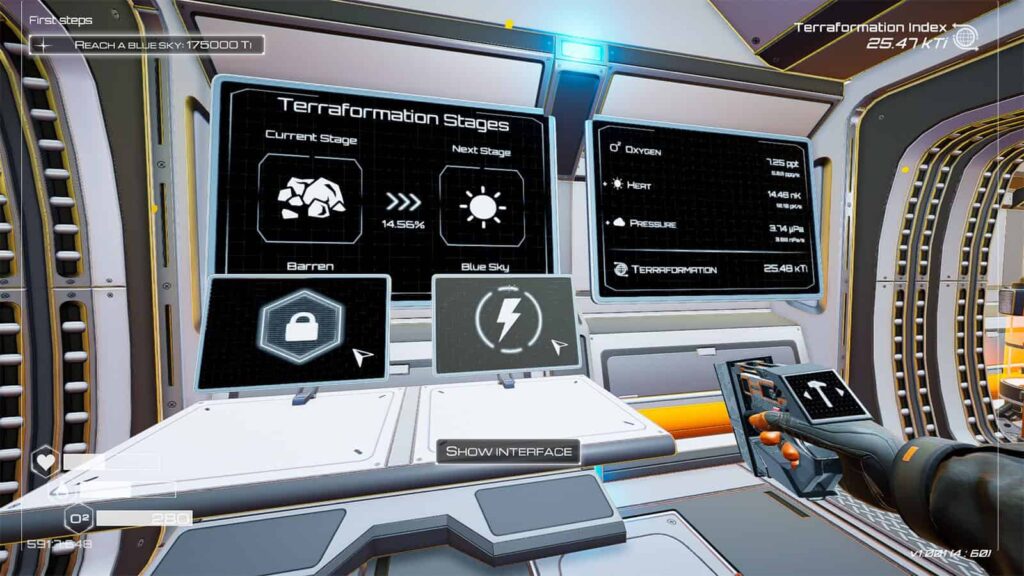
The game’s main progression is tied up to the Terraformation Index, and this index is further subdivided and calculated from the three initial measurements: Oxygen, Heat, and Pressure (and Biomass much later on in the game). However, there is another measurement or metric that has to be managed along with these metrics and that is Energy, both consumption and production.
The good thing with Energy in The Planet Crafter is that it is infinite, so you can simply build more energy-producing structures to keep up with your energy needs. Also, there is no need to fuss about cabling and such because all energy-producing structures, once power up, are automatically connected to the invisible grid, regardless of where they are on the planet.
The terraforming metrics are separate from each other and each has its own tech tree that can be unlocked. On the other hand, Energy affects all terraforming as once the consumption rate goes over the production rate, all powered equipment and machine will stop and so will the entire terraforming process.
Don’t build the main base near the drop pod
Your first base upon landing at the planet can be built near the drop pod, especially that the drop pod is your primary source for filling up your O2 tanks. However, do not spend too much time building your forever base near the drop pod. This is because as you terraform the planet, rain will eventually flood all of the lowlands, including the valley where you landed.
If you wish to build a forever base, you can travel north of where you are to reach the Central Plateau where the land is high enough and flat enough, or you may want to build smaller bases as you explore the rest of the areas and delay building the base until you reach the later areas such as the Waterfall.
Focus on unlocking Gear technology
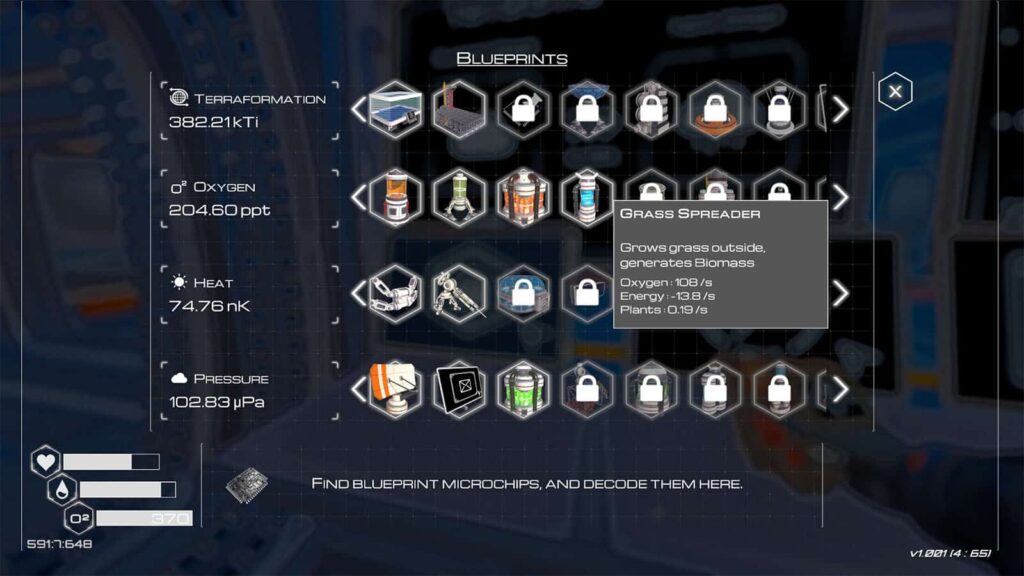
At the beginning of the game, you will only have your suit that keeps you protected from the harsh environment of the planet. Your first set of objectives include crafting yourself Gear upgrades that improve your survivability and your capacity to carry stuff. Unlock and craft these technologies as early as possible as they can help you progress faster in the game. The most important upgrades are the O2 tank upgrades, Exosuits, Movement Speed upgrades, and the Jetpack.
Some gear upgrades can be unlocked by finding and decoding Blueprint Microchips which are usually found in ship wreckages.
There is a hidden time limit for survival
Although it is not made obvious, there is actually a sort of hidden time limit for attaining survivability and sustainability in the early part of the game, depending on your chosen difficulty. Your health is tied up to your hunger which also goes down as time passes, and so to replenish it, you will need to constantly eat food. Food is actually quite limited in the early part of the game as there are only a finite amount of Space Food in your starting inventory, as well as in chests and in wreckages.
In order to prevent running out of food, it is important to unlock the Food Grower technology by raising the planet’s Oxygen level to 12.00 ppt as fast as possible. This can be done by setting up multiple Vegetubes with O2-producing plants in them. Once you have the Food Grower unlocked, you can start producing your own food.
Living Compartments serve as Oxygen refilling stations
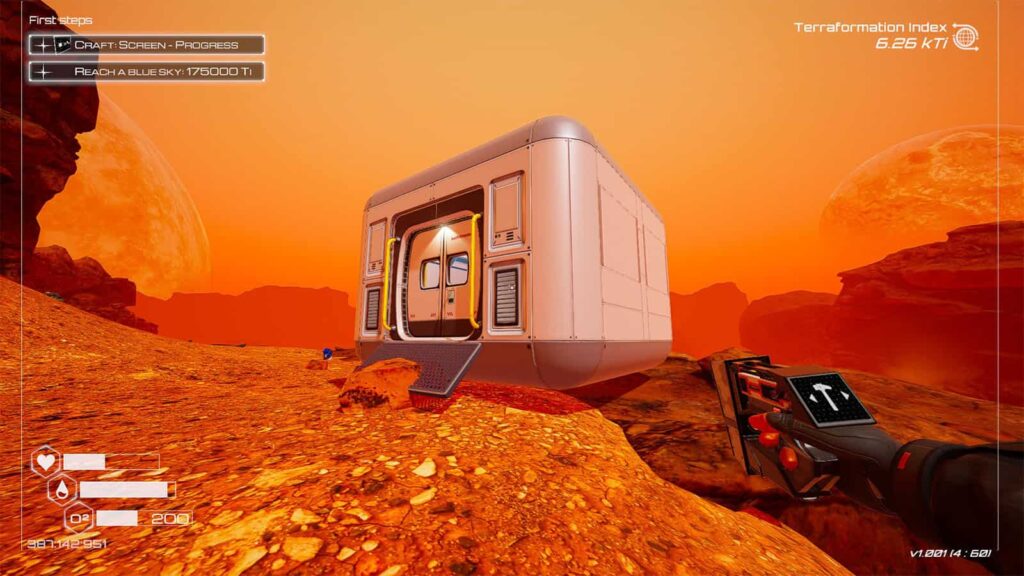
If you plan on venturing out farther away from your current base, it is recommended to bring some materials enough for you to build a Living Compartment and a door that you can use as an emergency shelter. This way, in case you find yourself running low on O2 without any cannisters on hand, you can simply head inside a compartment and wait for your O2 tanks to be refilled. You can leave these refilling stations dotted across your path to points of interest so that you won’t have to worry about running out of oxygen.
These are the materials needed to build a functional O2 refilling station:
- x3 Iron
- x2 Titanium
- x1 Silicon
Meteors are sources of materials
From time to time, the planet is pelted with meteor showers. Once these meteorites fall on to the ground and explode, they leave behind debris and materials that you can gather. The materials that you can get from these meteorites will differ as you progress, and you will be able to intentionally cause meteor showers once you have unlocked the right technology to do so. It is possible to get hurt when you get hit directly by a meteorite, but they do not cause any damage to any built structures.
Debris can be deconstructed
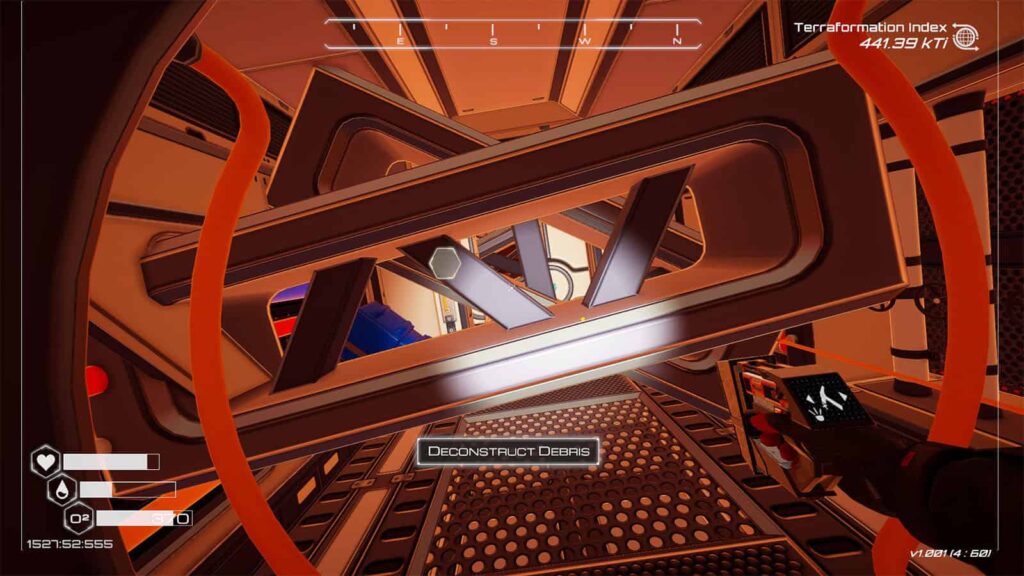
Ship wreckages are a good source of high-tier materials and blueprint microchips, as well as supplies, so it is good to venture in one as soon as you can. These wreckages have modular rooms that are sometimes blocked by beams or debris. Make sure to unlock the Microchip – Deconstruct and equip it so that you can deconstruct these debris and get into the deeper rooms which often have a great amount of loot.
Rocket Engines can be found early in one of the wreckages
Rocket Engines are a crafting material used for making rockets and most especially the Jetpack. Creating these engines would usually require you to craft more advanced materials through the Advanced Craft Station, but you can skip this part and just obtain the Rocket Engines by going inside the wreckage in the middle of the Dune Desert, northwest of the starting valley. You will find more than enough Rocket Engines inside to craft a Jetpack right away.
Place beacons on bases
Because of how the map system is locked further into the game, it can be super easy to get lost in the planet. The good thing is that Beacons can be unlocked early and placing at least one near your base of operations will help you get a bearing of the land, especially if you need to head back to base. The Beacon’s marker can be seen on the screen regardless if there are objects or landmasses in between you and the Beacon itself.



